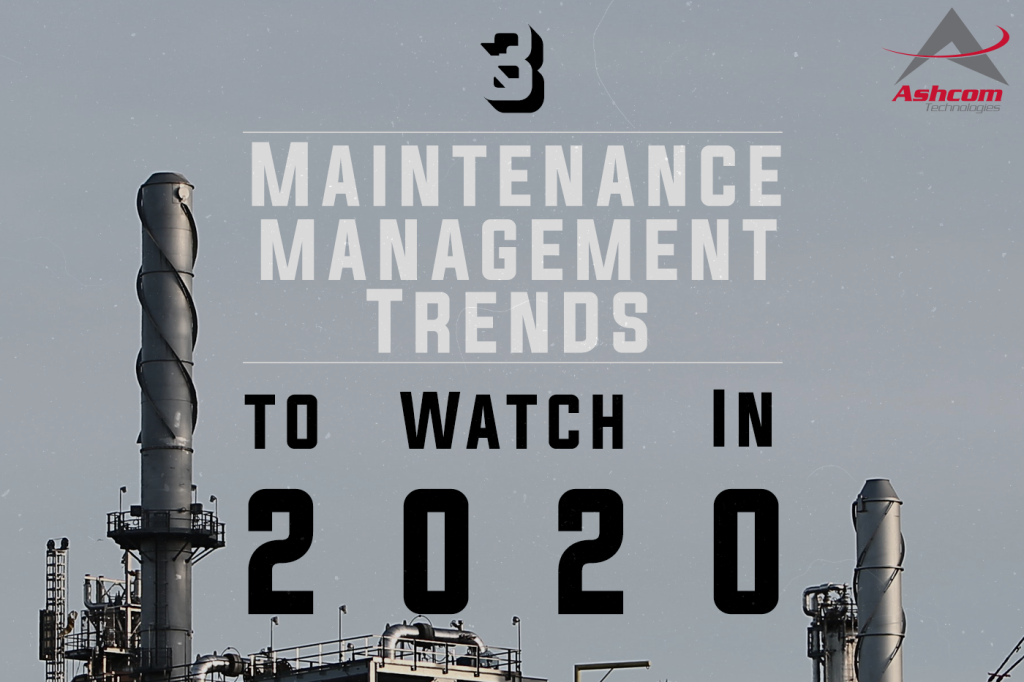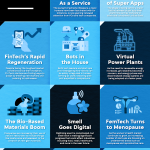Unlocking The Power Of Latest Technologies Trends In Maintenance Management – Embrace The Future Of Efficiency And Success!
Latest Technologies Trends in Maintenance Management
Introduction
Dear Readers,
Welcome to our article on the latest technology trends in maintenance management. In this fast-paced digital age, staying updated with the latest advancements is crucial for the success of any organization. Maintenance management plays a vital role in ensuring the smooth functioning of equipment and assets, and the adoption of new technologies can greatly enhance efficiency and productivity.
1 Picture Gallery: Unlocking The Power Of Latest Technologies Trends In Maintenance Management – Embrace The Future Of Efficiency And Success!

In this article, we will explore the key trends in maintenance management and how they can benefit businesses across various industries. So, let’s dive right in and discover the exciting developments that are shaping the future of maintenance management.
Table of Contents
1. Introduction

Image Source: ashcomtech.com
2. What are the latest technologies trends in maintenance management?
3. Who can benefit from these trends?
4. When should organizations adopt these technologies?
5. Where can these technologies be applied?
6. Why are these trends important?
7. How to implement the latest technologies in maintenance management?
8. Advantages and disadvantages of the latest technologies in maintenance management
9. FAQ
10. Conclusion
11. Final Remarks
What are the latest technologies trends in maintenance management?
🔍 Artificial Intelligence (AI), Internet of Things (IoT), and Big Data Analytics are the three major technology trends revolutionizing maintenance management:
1. Artificial Intelligence (AI): AI enables machines to learn and make decisions without human intervention. It can predict equipment failures, optimize maintenance schedules, and reduce downtime by analyzing historical data and patterns.
2. Internet of Things (IoT): IoT connects physical devices and equipment to the internet, allowing real-time monitoring and data collection. Through IoT sensors, organizations can track equipment performance, detect anomalies, and schedule maintenance proactively.
3. Big Data Analytics: With the increasing amount of data generated by IoT devices, organizations can leverage big data analytics to gain valuable insights. Analyzing this data can help identify trends, optimize maintenance strategies, and make data-driven decisions.
These technologies work together to provide a comprehensive maintenance management solution, empowering organizations to transform their maintenance processes and achieve better operational efficiency.
Benefits of the latest technologies in maintenance management:
✅ Improved equipment reliability and uptime
✅ Reduced maintenance costs
✅ Enhanced asset tracking and inventory management
✅ Increased safety for maintenance staff
✅ Optimal resource allocation and scheduling
Who can benefit from these trends?
👥 Organizations across various industries can benefit from the latest technologies in maintenance management:
1. Manufacturing: Predictive maintenance can help manufacturers minimize downtime, optimize production, and prevent costly breakdowns.
2. Energy and Utilities: Real-time monitoring and predictive analytics enable energy and utility companies to identify potential faults, optimize maintenance schedules, and improve reliability.
3. Transportation: IoT and AI-driven maintenance management can enhance the safety and reliability of vehicles, reduce maintenance costs, and improve fleet performance.
4. Healthcare: Medical equipment requires regular maintenance to ensure accuracy and patient safety. The latest technologies can streamline maintenance processes and minimize equipment downtime.
5. Facilities Management: IoT sensors can monitor the condition of buildings, equipment, and systems, enabling proactive maintenance and cost-effective asset management.
By embracing these trends, organizations can gain a competitive edge, reduce operational costs, and deliver superior customer experiences.
When should organizations adopt these technologies?
⏰ The best time for organizations to adopt the latest technologies in maintenance management is now:
1. Early adopters have a competitive advantage: By embracing these technologies early on, organizations can gain a competitive edge in their industry and establish themselves as market leaders.
2. Increasing maintenance challenges: As equipment becomes more complex and downtime costs rise, organizations need advanced technologies to optimize maintenance processes and reduce risks.
3. Cost-effectiveness: The decreasing cost of technology, coupled with the potential savings from improved maintenance, makes it an opportune time to invest in these trends.
4. Regulatory compliance: Many industries have strict regulations regarding maintenance and safety. Implementing the latest technologies can help organizations meet these compliance requirements effectively.
By adopting these technologies promptly, organizations can stay ahead of the curve and reap the benefits of efficient maintenance management.
Where can these technologies be applied?
🌍 The latest technologies in maintenance management can be applied across various domains:
1. Manufacturing plants and factories
2. Energy generation and distribution facilities
3. Transportation systems and logistics
4. Healthcare institutions and hospitals
5. Commercial buildings and facilities
These technologies have immense potential to transform maintenance management in any industry or sector where equipment, assets, or infrastructure require regular upkeep.
Why are these trends important?
❗ The latest technologies in maintenance management are important for several reasons:
1. Predictive maintenance: These technologies enable organizations to move away from reactive maintenance towards predictive maintenance, reducing unplanned downtime and minimizing costs.
2. Improved decision-making: Advanced analytics and AI-powered algorithms provide organizations with actionable insights, empowering them to make informed decisions and optimize maintenance strategies.
3. Enhanced safety and reliability: By proactively monitoring and maintaining equipment, organizations can ensure the safety of their workforce and the reliability of their assets.
4. Cost savings: The ability to schedule maintenance in advance and avoid costly breakdowns can result in significant cost savings for organizations.
5. Efficient resource allocation: By optimizing maintenance schedules and resource allocation, organizations can reduce idle time and improve overall productivity.
Embracing these trends is crucial for organizations to stay competitive, improve operational efficiency, and deliver high-quality products and services.
How to implement the latest technologies in maintenance management?
🔧 Implementing the latest technologies in maintenance management involves the following steps:
1. Assess organizational needs: Identify the specific maintenance challenges and goals of your organization to determine which technologies will be most beneficial.
2. Select the right technology partners: Collaborate with technology vendors who specialize in maintenance management and have a proven track record of successful implementations.
3. Conduct a pilot project: Start small by implementing the technology in a specific area or department to test its effectiveness before scaling up.
4. Train employees: Provide comprehensive training to your maintenance staff to ensure they understand how to operate and leverage the new technologies effectively.
5. Monitor and evaluate: Continuously monitor the performance of the implemented technologies and gather feedback to make improvements and optimize the maintenance processes.
By following these steps, organizations can successfully implement the latest technologies in maintenance management and reap the rewards of improved efficiency and productivity.
Advantages and Disadvantages of the latest technologies in maintenance management
✅ Advantages:
1. Improved equipment reliability and uptime: Predictive maintenance can prevent unexpected equipment failures, resulting in increased availability and reduced downtime.
2. Cost savings: Proactive maintenance allows organizations to plan and allocate resources efficiently, reducing maintenance costs and maximizing asset lifespan.
3. Enhanced safety: Real-time monitoring and predictive analytics enable organizations to identify potential safety hazards and take proactive measures to prevent accidents.
4. Data-driven decision-making: Advanced analytics provide valuable insights into maintenance trends, enabling organizations to make informed decisions and optimize maintenance strategies.
5. Increased efficiency: Automation and AI-driven algorithms streamline maintenance processes, reducing manual intervention and improving overall operational efficiency.
⛔ Disadvantages:
1. Initial investment: Implementing the latest technologies in maintenance management may require a significant upfront investment, especially for small and medium-sized enterprises.
2. Skill gaps: Organizations may need to upskill their maintenance workforce to effectively operate and leverage the new technologies, which can pose challenges in terms of training and adoption.
3. Data security and privacy: Collecting and analyzing large amounts of data may raise concerns regarding data security and privacy. Organizations must ensure robust security measures are in place.
4. Integration complexity: Integrating new technologies with existing maintenance systems and processes may require careful planning and coordination to avoid disruptions.
5. Over-reliance on technology: While technology can greatly enhance maintenance management, organizations must ensure they strike the right balance between automation and human intervention.
Understanding these advantages and disadvantages will help organizations make informed decisions when implementing the latest technologies in maintenance management.
FAQ
1. What is the impact of the latest technologies on maintenance costs?
👉 Implementing the latest technologies can significantly reduce maintenance costs by enabling proactive maintenance, optimizing resource allocation, and minimizing unplanned downtime.
2. How can predictive maintenance improve equipment reliability?
👉 Predictive maintenance uses AI and data analytics to identify potential equipment failures before they occur, allowing organizations to take preventive measures and improve overall equipment reliability.
3. Are these technologies suitable for small businesses?
👉 Yes, these technologies can benefit businesses of all sizes. However, small businesses may need to carefully evaluate their specific needs and budget constraints before implementing them.
4. What are the main challenges in implementing these technologies?
👉 Some of the main challenges include initial investment costs, skill gaps, data security concerns, integration complexities, and finding the right technology partners.
5. How long does it take to see tangible results from implementing these technologies?
👉 The timeframe to see tangible results may vary depending on the organization’s specific circumstances and the complexity of the implementation. However, organizations can typically expect to see improvements within a few months of implementation.
Conclusion
In conclusion, the latest technologies trends in maintenance management offer immense opportunities for organizations to improve efficiency, reduce costs, and enhance safety and reliability. By embracing artificial intelligence, Internet of Things, and big data analytics, organizations can transition from reactive maintenance to predictive maintenance, resulting in improved equipment uptime, optimal resource allocation, and data-driven decision-making.
It is essential for organizations to assess their specific needs, select the right technology partners, and provide proper training to their maintenance staff to successfully implement these technologies. While there may be challenges along the way, the benefits far outweigh the drawbacks, making it a worthwhile investment for organizations striving for excellence in maintenance management.
Final Remarks
Dear Readers,
As we conclude this article on the latest technologies trends in maintenance management, we hope you found it insightful and informative. Embracing these trends can transform the way organizations maintain their equipment and assets, leading to improved efficiency, reduced costs, and enhanced operational performance.
However, it is important to note that every organization’s journey towards implementing these technologies will be unique, and careful planning and evaluation are necessary to ensure a successful implementation. We encourage you to explore further and consult with experts to determine the best approach for your organization.
Thank you for joining us on this exploration of the latest technologies trends in maintenance management. We wish you success in harnessing the power of these technologies to drive excellence in your maintenance practices.
This post topic: Latest Technology Trends


